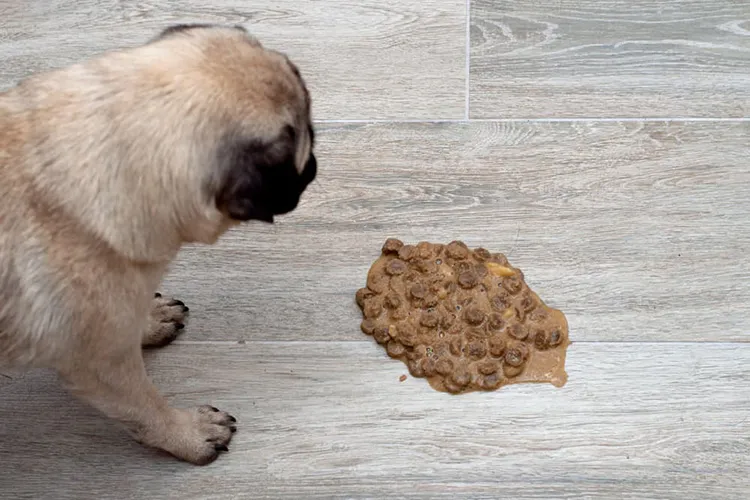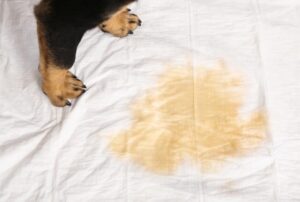As a dog owner, you've probably witnessed your furry friend chewing on some pretty strange things. But discovering that your dog has swallowed a sock can send your worry levels through the roof. Don’t panic just yet—let’s walk through what you should do if this happens, step by step.
Why Do Dogs Eat Socks?
Dogs are curious creatures and often explore the world with their mouths. A sock might seem like a fun, chewy toy, especially if it carries your scent, which provides comfort to your pup. Puppies, in particular, may chew and swallow socks during teething or because of boredom.
First Things First: Assess the Situation

- Confirm they actually ate it
If you saw your dog swallow a sock or find yourself missing one and your dog is acting suspicious, it’s safe to assume they’ve ingested it. - Check your dog's behavior
Look out for signs that the sock might be causing a blockage:- Vomiting
- Lack of appetite
- Lethargy
- Straining to defecate or lack of bowel movements
- Abdominal pain or bloating
If your dog shows any of these symptoms, contact your veterinarian immediately.
Should You Induce Vomiting?

This depends on several factors. While inducing vomiting can sometimes help remove the sock, it’s not always the safest choice.
When to Induce Vomiting:
- Timeframe: If your dog swallowed the sock within the past 2 hours, inducing vomiting may help. After that, the sock could move further into the digestive tract, making vomiting ineffective or dangerous.
- Sock Size: If the sock is small and likely to come up without causing choking, inducing vomiting might work.
When NOT to Induce Vomiting:
- If your dog is showing signs of distress (vomiting, lethargy, or pain).
- If the sock is large or made of a material that could expand when wet, like wool.
- If your dog is brachycephalic (like a bulldog or pug) or has a history of respiratory issues—vomiting could lead to choking or aspiration.
How to Induce Vomiting (Only Under Vet Guidance)

If your vet advises inducing vomiting, they may recommend using hydrogen peroxide (3%) as an emetic. Here’s how:
- Dosage: The general guideline is 1 teaspoon per 10 pounds of body weight, up to 3 teaspoons.
- Administer: Use a syringe or turkey baster to squirt the hydrogen peroxide into your dog’s mouth.
- Wait: Your dog should vomit within 10–15 minutes. If not, do not repeat the dose—contact your vet for further instructions.
⚠️ Never induce vomiting without veterinary approval. In some cases, it can do more harm than good.
What Happens If You Don’t Induce Vomiting?
If the sock doesn’t come up through vomiting, it may pass naturally. Monitor your dog’s stool over the next 48–72 hours to see if the sock appears. Keep an eye on your pup’s behavior; if they seem uncomfortable or sick, a blockage might have occurred, requiring medical intervention.
When to See the Vet

You should contact your veterinarian immediately if:
- Your dog is showing symptoms of a blockage.
- It’s been more than 2 hours since ingestion.
- The sock hasn’t passed within 3 days.
- You’re unsure whether inducing vomiting is safe.
In some cases, your vet may perform an X-ray or ultrasound to locate the sock. Depending on its position, they may recommend an endoscopy to retrieve it or surgery if it’s causing a blockage.
Prevention: Keeping Socks Away From Dogs
To avoid future sock-related mishaps:
- Keep laundry baskets out of reach.
- Provide appropriate chew toys.
- Address boredom with regular exercise and mental stimulation.
FAQs
1. Can a dog pass a sock naturally?
Yes, many dogs can pass small socks naturally within 48–72 hours. However, larger socks or those made from non-digestible materials may cause blockages.
2. Is hydrogen peroxide safe for dogs?
Hydrogen peroxide (3%) can be safe when used in the correct dosage under a vet’s guidance. Never administer it without professional advice, as misuse can harm your dog.
3. What are the signs of a blockage in a dog?
Signs include vomiting, lack of appetite, lethargy, abdominal pain, bloating, and difficulty defecating. If you notice these symptoms, contact your vet immediately.
4. How long does it take for a dog to pass a sock?
If the sock passes naturally, it usually takes 2–3 days. Keep monitoring your dog’s stool during this time.
5. Can a sock cause long-term damage to a dog’s digestive system?
If the sock causes a blockage or tears the digestive tract, it can lead to severe complications. Prompt treatment is essential to prevent long-term damage.
Final Thoughts
While a sock-eating episode is stressful, staying calm and taking quick action can help ensure your dog’s safety. Always consult your vet before attempting to induce vomiting, and monitor your pup closely for any signs of trouble.
By understanding the risks and taking preventative measures, you can keep your curious canine safe and healthy!














